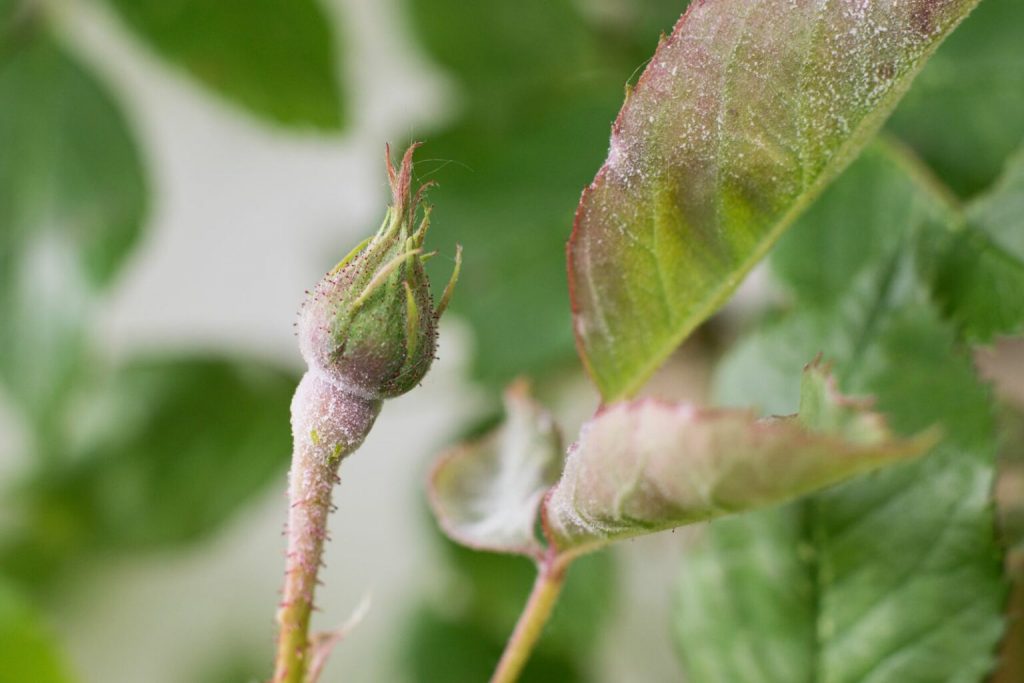November 13, 2025


Powdery mildew is not new to Kenyan growers. It’s familiar, predictable and persistent. Most farms have standard protocols in place: fungicide programs, routine scouting, and sanitation measures, but every season, it still creeps in, on rose buds, gerbera leaves, and chrysanthemum stems, quietly compromising quality and profitability. The bigger question is not how it happens, but why it’s still happening.
Powdery mildew’s biology is well understood: airborne spores, high humidity, mild temperatures, and indirect light, but what has changed in recent years is the environment it operates in:
- Microclimates inside greenhouses are intensifying, driven by structural wear, blocked airflow, and overcompensated irrigation.
- Climate variability has blurred seasonality, stretching mildew pressure across unexpected periods.
- Fungicide resistance is building, slowly but surely, from overuse of DMIs and strobilurins without FRAC-based rotation.
- Post-harvest flare-ups are rising, catching logistics and quality teams off guard.
For many growers, the visible symptoms; white patches, distorted leaves and reduced stem strength are only part of the story. The less visible costs include:
- Downgrading at grading tables due to petal spotting or distorted heads
- Shortened vase life leading to importer complaints or reduced shelf-time in retail
- Pre-export rejection during final quality control checks
- Loss of audit points tied to disease control and chemical traceability
Repeat mildew problems can raise red flags during certifications, especially where curative chemical dependence is visible. Beyond the direct economic impact, there are also resource inefficiencies: wasted chemicals, water used to manage disease-stressed crops, and time spent on re-treating areas that could have been prevented, and all this in a market that increasingly links disease management to sustainability credibility.
Why Routine Is Not Working Anymore
Most growers have a mildew program. But many are built on assumptions that no longer hold:
- That once-weekly sprays are enough
- That symptoms only matter if visible
- That the problem is purely chemical
- That post-harvest teams can correct pre-harvest lapses
In today’s production reality, those assumptions are risky. Powdery mildew doesn’t respect routines; it exploits them. Greenhouse structures degrade, irrigation creep happens. A month of cloudy mornings shifts disease windows by hours. If IPM calendars remain static, powdery mildew gets the upper hand, not through aggression, but through neglect.
What Strategic Growers Are Doing Differently
The most resilient farms aren’t just spraying smarter, they’re thinking differently. Here’s what sets them apart:
Rotating for Resistance, Not Just Coverage
Strategic growers implement FRAC-coded rotations not as a checkbox exercise but to proactively preserve fungicide effectiveness. Multi-site fungicides such as sulfur and mancozeb are integrated not as a fallback, but as critical preventives. Biologicals like Bacillus subtilis or plant extract-based products are deployed not to replace chemicals, but to buffer between them.
Treating Air as a Crop Input
Top-performing growers track humidity the way they track fertilizer EC. They calibrate fogging and ventilation systems with disease risk, not just heat stress. Airflow audits are carried out every six months. Humidity spikes from morning irrigation are mitigated by pre-dawn venting or short-cycle drip systems.
Training Scouts Beyond Symptom Spotting
Mildew doesn’t always begin with white spores, it starts as stalling growth, subtle leaf folding, or lowered turgor. Advanced scouting teams are trained to identify early stress signals before disease expression. They work with climate and fertigation data, not just clipboards and markers.
Linking Scouting to Spray Strategy
Smart farms close the feedback loop between scouting and spray decisions. Weekly review meetings are held with agronomy, production and QA. Where mildew appears, data is traced backward: Was the spray timely? Was the product rotated? Was airflow obstructed?
Closing the Post-Harvest Loop
What leaves the greenhouse mildew-free can still arrive infected. Leading growers are investing in cold room audits, shipping humidity logs, and visual inspection checklists before packing. Handling procedures are aligned with IPM, not just export schedules.
Beyond Control
Powdery mildew may never be fully eliminated, but it can be contained, delayed, and minimized. What separates high-performance growers from the rest is their ability to treat it not just as a disease, but as a barometer of systemic control.
Where mildew thrives, airflow, scouting, and chemical stewardship are usually compromised. Where mildew is rare, systems are in sync.
Lessson: Powdery mildew isn’t just about what you see on leaves, it’s about what’s happening behind the scenes.
